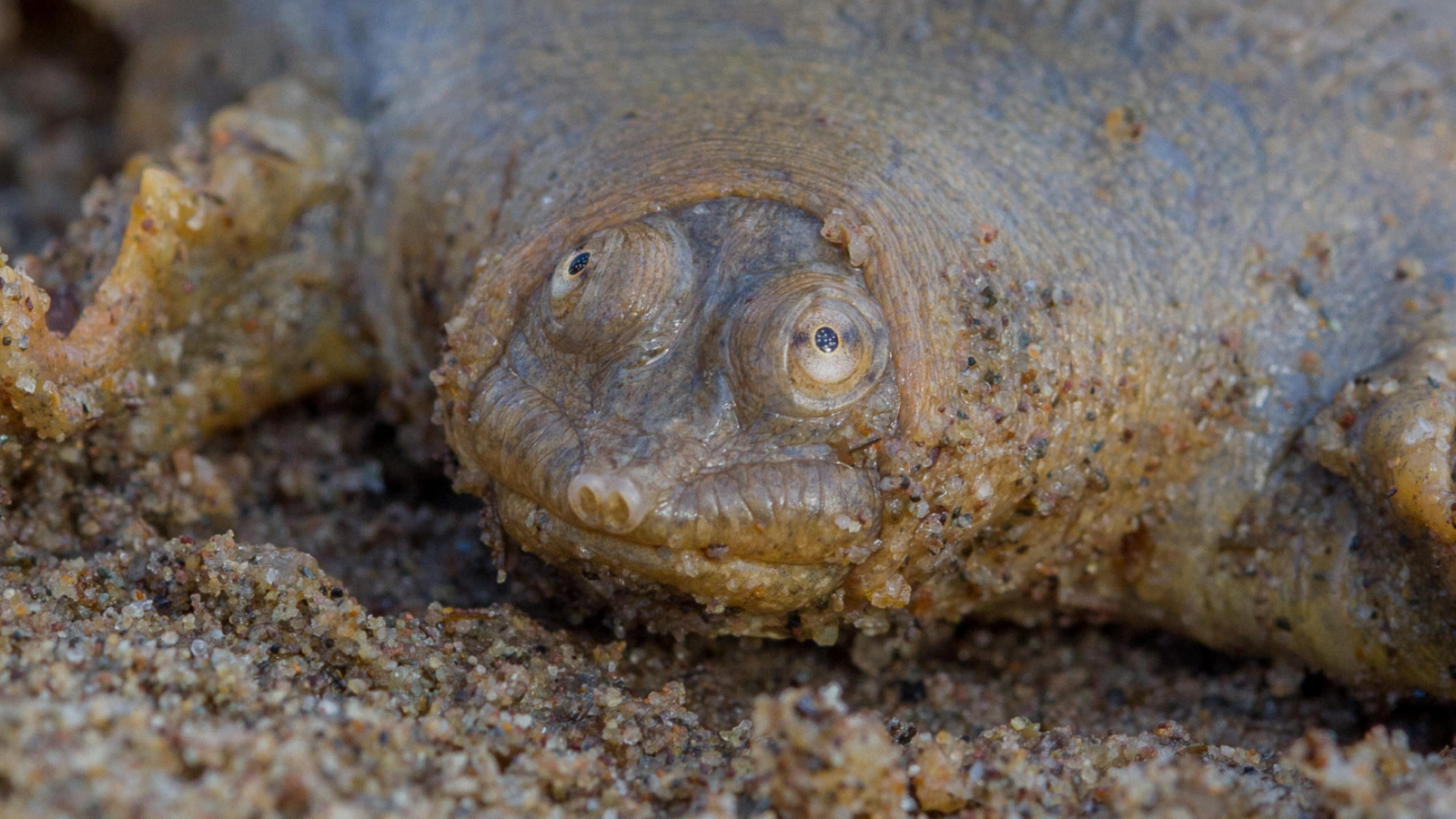
Name: Cantor's giant softshell turtle (Pelochelys cantorii)
Where it lives: Rivers in South and Southeast Asia
What it eats: Fish, crustaceans, mollusks, frogs, insects, birds, small mammals
Why it's awesome: Cantor's giant softshell turtles — named in honor of Danish zoologist Theodore Edward Cantor — spend 95% of their lives completely motionless, buried under mud or sand in shallow rivers with only their eyes and snorkel-like snouts protruding out. But when these unusual-looking reptiles spot something to eat, they can move at lightning-quick speeds.
When they spot fish, frogs or crustaceans, they rapidly extend their necks to strike their prey. They have long claws and powerful jaws that are strong enough to crush bone.
Unlike their hard-shelled cousins, these turtles have leathery, flat, green or brown shells. These large, freshwater turtles are also known as "frog-faced softshells" because of their amphibian-like facial features. They can grow up to 40 inches (100 centimeters) long — although some sources suggest they can grow even larger — and weigh more than 100 kilograms.
Like other soft-shell turtle species, they are thought to have the ability to extract oxygen from the water through their skin, which helps them stay underwater for long periods of time. However, they can only get so much oxygen this way, so they come up to the surface to breathe air twice a day.
These endangered turtles are extremely rare: Between 1985 and 1995, only a single specimen was found. They are native to rivers in India, Bangladesh, Burma, Thailand, Malaysia, Laos, Cambodia, Vietnam, China, the Philippines and Indonesia.
In 2024, the first nesting site of a Cantor was discovered by biologists on the banks of the Chandragiri River in Kerala,India. The researchers used knowledge from local communities to locate the turtle.







